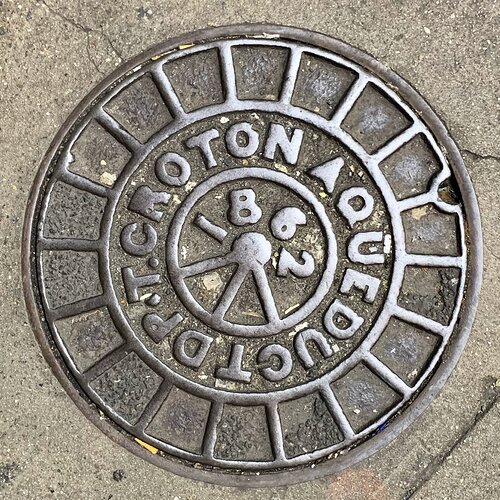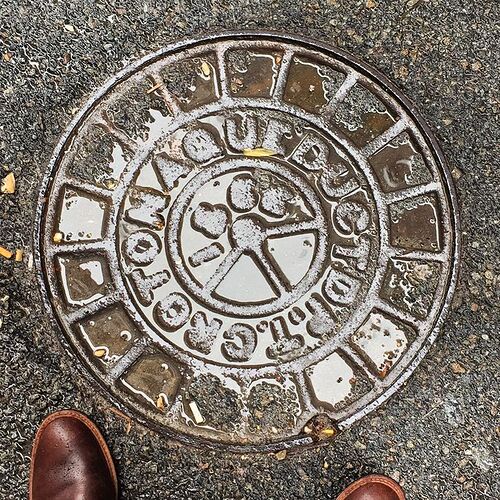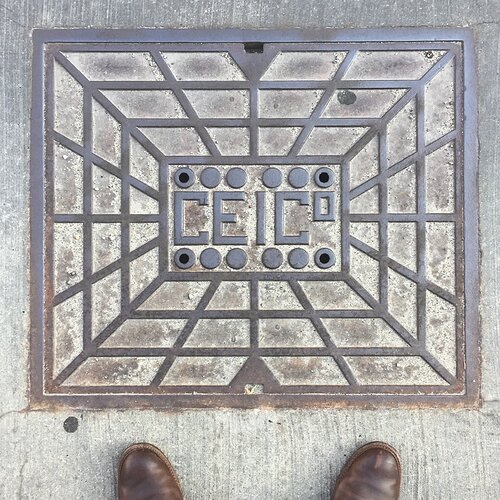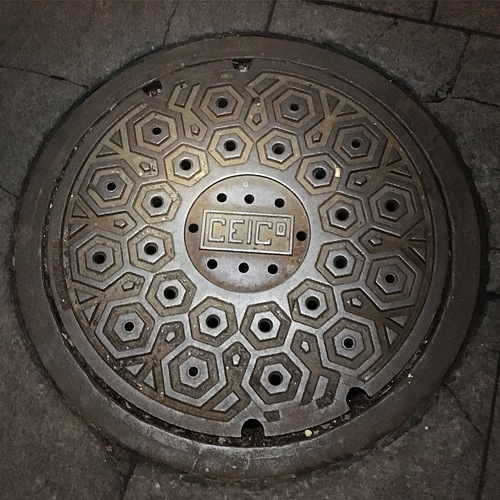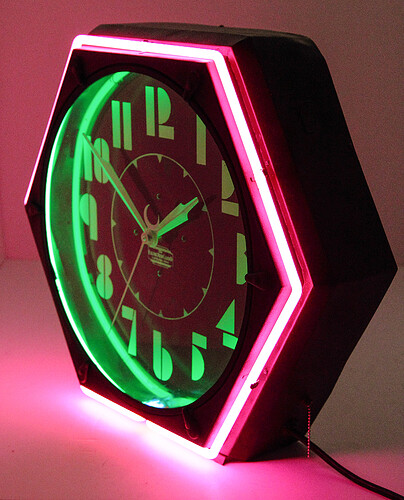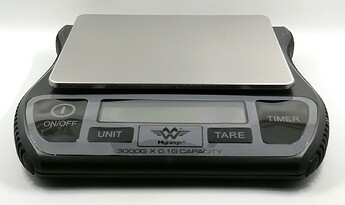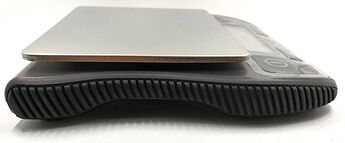That sounds rather bizarre and I’ve never heard of this. Does it have something to do with like the lost art of cast iron design from the art deco period or something?
uh, sometimes? Really there aren’t very many manhole covers still around from the art deco period or before, there might literally be a handful of them that are that old still in NYC and even those are disappearing.
Just in the last few months one of the last original Croton Aqueduct covers from the 1860s disappeared from 8th Avenue in midtown:
https://www.instagram.com/p/CPMWyABlgFK/
there was another one like this in SoHo that disappeared sometime in 2018. There is one in central park and there might be a couple of others that are known, but the midtown one and the soho one are the only ones I’ve seen myself.
Here’s a pic of the 8th Ave cover I got in December 2019
Soho, late 2017:
Central Park West, near the natural history musuem:
Cleveland Electric Illuminating Co (this was actually taken in Indianapolis. when you mentioned art deco specifically this one popped out in my mind):
Another CEICo, this one in Columbus:
(this cog pattern is usually associated with the Bell System and it’s descendants though you see them repurposed occasionally).
Oh yeah that reminded me of one of my weird fascinations:
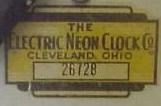
We should probably have an artifacts / antiques / trainspotting type thread.
I had to pour another V60. Baratza recommends a grind setting of 4M (1A being the finest setting, 10W the coarsest, with 2Q zero point calibration). I’m at high 6 / low 7 range, got a 3:38 drawdown, and judging by taste should still go a bit coarser aiming for 3:00 to 3:15. I’m probably going to finish in the 8s which is what people in the HB thread were noticing. Seems counterintuitive that you’d need to grind coarser after achieving alignment?
Gear review: Scales
First, let me point out some features that I’m looking for in a coffee scale.
(1) I need the ability to disable the auto shut-off feature which can become extremely annoying for manual coffee brewing.
(2) I’m looking for resolution better than 1g. I’ll note that resolution != accuracy, but in general I’ve found that the accuracy of most scales seems to be +/- a unit of resolution. There’s generally a trade-off between resolution and maximum capacity, which leads me to…
(3) The maximum capacity needs to be large enough to fit all of your gear. My V60 setup comes out to about 800g total for single dosing, but that doesn’t mean I’d go for a scale with a 1,000g capacity–I want more overhead than that to allow for possibility of larger batches or heavier equipment. My min requirement was ~2,000g.
(4) The readout speed should be fast. By that I mean when you’re pouring water, you want the weight to update nearly immediately. I’ve used cheap scales that lag behind by hundreds to thousands of milliseconds which I want to avoid.
Both scales I’m reviewing meet these requirements. I should also mention that both have plastic cover plates that protect the load cells when the units are not in operation.
MyWeigh Barista (price paid: $37.50)
I’ve been using this MyWeigh scale daily for about a year now. The first thing I’ll note is that it’s pretty small and really an espresso scale: both my Hario kettle and Chemex hang over the edges of the plate which slightly hurts readability. It has a max capacity of 3,000g with 0.1g resolution. That kind of resolution is really nice for single dosing and retention. It has a backlit negative LCD display that’s high contrast and easy to read. Unit modes include g, oz, lbs, lbs:oz, and pieces. It has a timer function aimed at espresso I’ve found to be useless for pour-over coffee.
Build quality: Stainless steel plate. The main body is fairly uninspiring plastic but you mostly contact the rubberized ridges on the side that provide a secure grip. The membrane cover for the controls/display is a thin plastic that peeled up slightly on one corner. That’s disappointing but it doesn’t seem to have affected the functionality. The buttons are responsive and have a satisfying click. This unit has a lithium-ion battery that holds a charge forever. I think I’ve charged it two or three times total (micro USB). I read that this model has been discontinued due to some drift issue in the load cell, but I haven’t had any problems. That said, I wouldn’t pay more than $40 although the original list price was about double that.
J-Scale (Jennings) CJ-4000 (price paid: $29)
This is the classic scale that is frequently recommended for pour-over that I picked up more recently. It is larger than the MyWeigh and has a round plate that’s perfect for coffee vessels like a Chemex or glass decanter. The plate also sits farther away from the display/controls allowing easier readout and operation. The backlit display is black on very bright orange which is extremely readable. I think the modes are the same with g, oz, lb, pcs. Scale capacity is 4,000g with a resolution of 0.5g.
Build quality: Stainless steel plate. Body is even cheaper plastic than the MyWeigh and is more uninspiring somehow. This unit feels lighter to me despite being larger. It’s not nearly as nice to touch or operate. It runs off 3 AAA batteries or the included AC adapter. Now for the worst part. This scale makes an annoyingly loud beep on every button press and cannot be disabled without modding the pcb. Seriously what the fuck?
Verdict: Neither unit is perfect for my purpose. However, I find myself still using the MyWeigh. The J-Scale is nicer for pouring water but that’s about it. Once I disable the awful speaker I may use it more. It also takes up more counter space which is a negative. The Hario Drip Scale is another option but it’s pretty expensive in stainless and seems to have reliability issues.
Buying recs: I am somewhat hesitant to recommend either of these units, but the MyWeigh is my pick under $40 if the plate (3.8″ x 4.7″) is large enough for your brew method. Surely both are considerably better than the cheapest garbage tier units you’d find at Amazon/Walmart. Even though I’m not particularly high on these scales, I’ve used much, much worse before. One thing I’ve learned is that there are tons of other scales out there that may be suitable for coffee but aren’t marketed as such. I’d stick with known/reputable scale manufacturers and look for 0.1g resolution with high max capacity.
If I get a conical burr grinder to replace my cheap blade grinder, can I just get this and not have to open it up like a mad scientist? I do one French press a day of a light-medium roast. Pour over has never interested me because of the volume I drink.
lol never mind people replace the burrs and still complain. This hobby is dumb.
What is the maximum you are willing to spend on a grinder?
FWIW I make a french press most mornings and bought one of these a year or two ago. Grinds just fine for me, but I don’t think I’m going for anything approaching the complexity that Lawnmower_Man is talking about. I will say that I’ve got the same problem that someone mentioned earlier where the area around the grinder just ends up completely covered with little bits of husk that cling to the cup.
Probably a couple hundred.
You have to determine whether you want the “flat” cafe-quality brew profile that isolates unique / distinct notes in single origins. If no, buy whatever conical burr you want. If yes, the minimum buy-in is around $300, sometimes less if you get lucky. The two options are the Fellow Ode or a used Vario w/steel and the alignment procedure. I’m really skeptical of Fellow, but maybe it works for you.
*The things I’m skeptical about aren’t related to the quality of the grind. People are reporting that it’s very good when dialed in. I’m skeptical about it being run by Stanford MBA Rohams that are basically coffee hype masters that underdeliver. How did they release a premium brew grinder that can’t grind V60? That is such a massive fail. Why did they need to use Kickstarter? How durable is this unit and what happens when it blows up?
By the way, if you really only ever plan on using French press then paying up for the flat burrs could be overkill. Immersion and percolation are very different brewing methods that extract coffee solids at different ratios. I’m not sure how big of a difference it might make but I can experiment for you and report back.
I guess I should get a pour over setup before I buy a grinder just to be sure?
I dunno because then you’d be pouring over bladed grinds? I don’t think it would give you an accurate representation of the potential. Have you tried anything crazy at a good cafe before? If it’s done right it should basically taste like candy. This stuff I’m drinking right now is so wild that I’m not exactly sure how to describe it. Maybe pink bubblegum and raspberry but with some bite like red wine? It sort of reminds me of certain weird Japanese sodas.
The difference in the grind takes it from having more of a sour apple tart acidity to a rounded, controlled acidity that has more specific candied fruit flavors. I describe it as tasting more “flat” because it’s more balanced than what I could do with the Encore. All of the coffees I’ve had from good shops are balanced with no objectionable flavors.
Grunching a few posts but we had a water filtration system put in a few years back and I started making coffee with the now distilled water from it. The coffee was completely flavorless but I thought it was the beans so I made a few changes with no improvement. Then I realized I was using the distilled water and switched back to our regular tap and the coffee was suddenly good again. Going in I had zero notion on how distilled water might affect coffee so it’s not like I was biased against it.
Yeah there are legit reasons why distilled water may not extract coffee properly. One is that it has no buffer against swings in pH. Another other is that it has no mineral content, specifically Ca and Mg which are good extractors for desirable coffee solids. Not that different from adding salt to food to enhance flavor. I have a pre-mixed solution (baking soda and Epsom salt in distilled water) that I add to distilled water to get these numbers in range, but I’d be lying if I said it always produces a noticeable taste difference. I think it really depends on the beans.
I have a hard time recommending recipe water to most people because it’s kind of a pain in the ass and requires special equipment. A far easier solution is to mix distilled with some bottled or filtered tap since those will already have the buffer and minerals, but probably just too much of them (aka hard water). So a good ratio is probably 2 to 3 parts distilled to 1 part hard. It’s a nice A/B test to run and if you can’t taste a difference use the easiest method.
Were these coffees dark roast by any chance?
All my coffee is going to be medium to dark roast; I can’t remember exactly what I was using at the time but I think it was more medium stuff, likely Tectonic Coffee which I have since abandoned for roasters that do medium/dark better.
